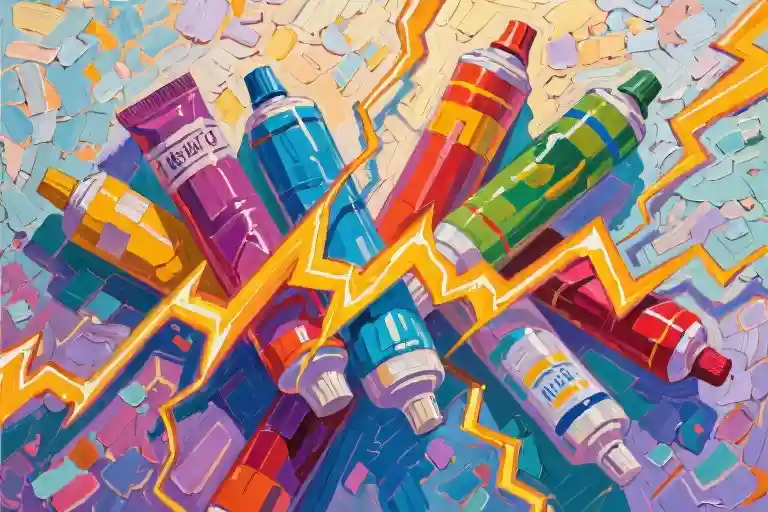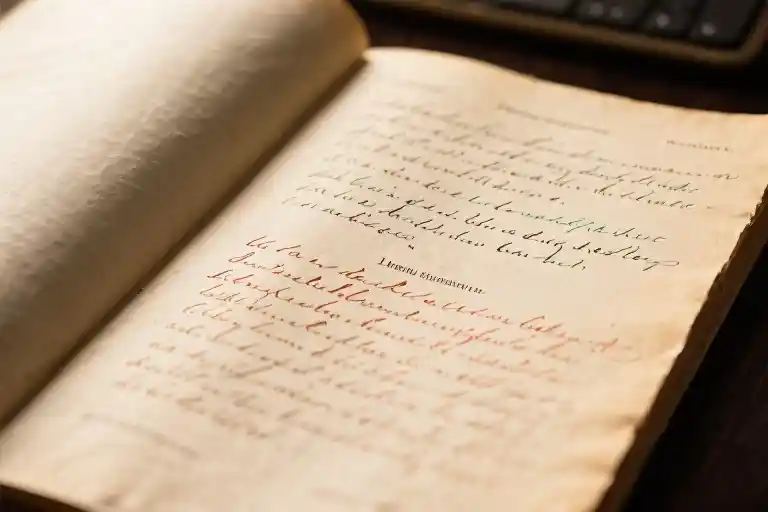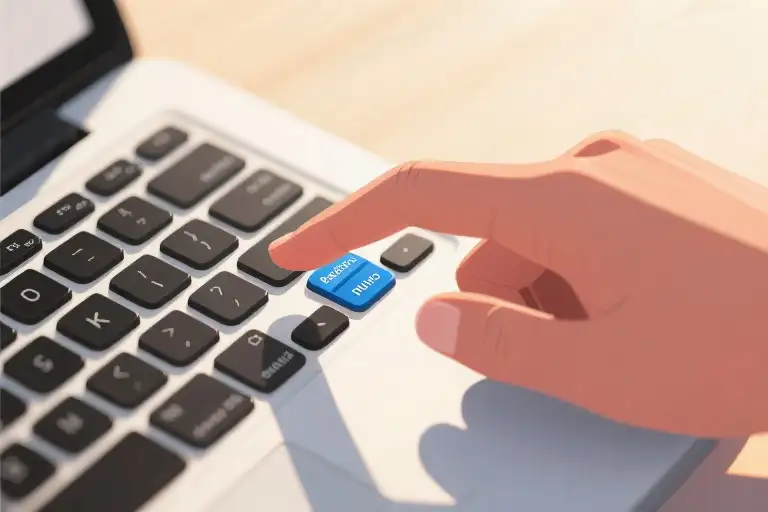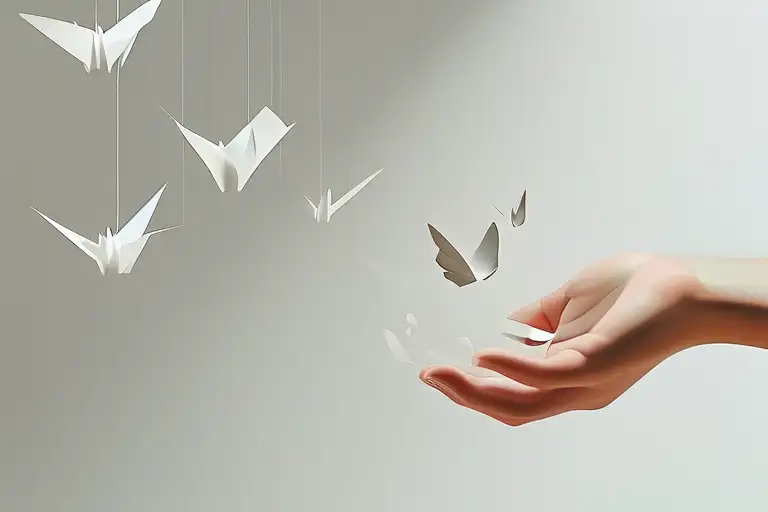There’s a particular kind of ache that settles in your bones when you’re not creating. It starts as a faint whisper—a restlessness when you stare at blank pages, a twitch in your fingers when you watch others bring their visions to life. For people like us, art isn’t just something we do; it’s how we breathe. The moment we stop creating, we begin suffocating in plain air.
I know this emptiness intimately. There are days when my keyboard gathers dust while my mind races with unwritten stories. Other times, I’m trapped in creative Groundhog Day—churning out similar designs, recycling tired metaphors, hitting the same emotional beats until my work feels as lifeless as a department store mannequin. That stagnant feeling? It’s not just unproductive—it’s soul-crushing.
Yet here’s the paradoxical truth: The very act that sustains us can also strangle us if we don’t nurture it properly. Like any living thing, creativity needs fresh nutrients, unexpected cross-pollination, and sometimes, outright theft (the legal kind, obviously). Over years of oscillating between creative euphoria and despair, I’ve assembled an arsenal of stolen strategies—from Pulitzer winners, indie filmmakers, even that genius barista who composes latte art like a Renaissance painter.
These aren’t theoretical musings. They’re battle-tested tactics that rescued me from:
- The 18-month novel-writing drought
- The “everything I design looks identical” crisis of 2020
- That terrifying week when I questioned whether I’d ever have an original idea again
What follows isn’t about waiting for inspiration to strike like some artistic Zeus. It’s about building lightning rods—practical methods to channel creativity even during your driest seasons. Because the world needs your art, even (especially) when you doubt it yourself.
Consider this your creative first aid kit. The supplies might look familiar—a borrowed technique here, a repurposed tool there—but their combination could spark the breakthrough you’ve been chasing. As Austin Kleon (author of Steal Like An Artist) puts it: “All creative work builds on what came before.” Your job isn’t to invent from nothing; it’s to remix the extraordinary work already surrounding you into something uniquely yours.
So let’s begin where all great thefts do—with careful observation and a getaway plan.
Steal Like An Artist (But Legally)
Every creator knows that hollow feeling when you’re staring at a blank page, cursor blinking like a mocking metronome. The myth of originality weighs heavy – how can we possibly create something truly new? Here’s the liberating truth: all creative work builds on what came before. As Austin Kleon brilliantly argues in Steal Like An Artist, the key isn’t avoiding influence but learning to harvest inspiration ethically.
The Fine Line Between Theft and Transformation
Plagiarism copies, art transforms. When I first read Kleon’s trilogy (which I now keep on my Audible rotation), it reframed my entire creative process. His central premise:
“You don’t want to look like your heroes, you want to see like your heroes.”
This distinction changed how I approached my stalled novel. Instead of agonizing over ‘originality,’ I began studying how my favorite authors constructed emotional moments. How did Celeste Ng build such palpable tension in Little Fires Everywhere? What made the dialogue in The West Wing snap with energy? By reverse-engineering these techniques, I wasn’t stealing – I was apprenticing.
Building Your Creative Arsenal
A haphazard Pinterest board won’t cut it. To systematically ‘collect’ inspiration:
- Create a digital commonplace book (I use a Google Doc with these headings):
- Techniques to borrow (e.g., “Kazuo Ishiguro’s unreliable narrator pacing”)
- Emotional triggers (that scene in Paddington 2 that makes everyone cry)
- Structural masterstrokes (how Parasite‘s production design foreshadows plot)
- Annotate actively: When watching films, note timestamps of brilliant moments. For books, use Kindle highlights or marginalia. My breakthrough came when I analyzed the 47-minute mark in Short Term 12 – the handheld camera work during the chase scene taught me more about conveying urgency than any writing manual.
- Remix relentlessly: Combine unexpected influences. My current project blends:
- The atmospheric dread of True Detective Season 1
- The familial tension of August: Osage County
- The visual symbolism of Hopper paintings
From Consumption to Creation
The magic happens when stolen sparks ignite your own fire. After bingeing Fleabag, I noticed Phoebe Waller-Bridge’s genius use of direct audience address. Instead of copying it, I adapted the technique for my protagonist’s internal monologue – creating intimacy while maintaining my distinct voice.
As Kleon reminds us:
“What a good artist understands is that nothing comes from nowhere. All creative work builds on what came before.”
Your assignment today: Pick one beloved work and dissect its skeleton. What makes its heart beat? Steal that pulse for your own work-in-progress.
Break Your Creative Box: Why You’re More Versatile Than You Think
That nagging voice whispering “I’m just a writer” or “I only do photography”? It’s lying to you. Every creator I’ve met—including my past self—has fallen into this mental trap of self-imposed limitations. We build invisible walls around our creativity, convinced that venturing beyond our primary medium would dilute our skills or expose our inadequacies. But here’s the liberating truth: creativity is a transferable superpower.
The Myth of the One-Trick Artist
For years, I wore my “Writer” label like armor, politely declining invitations to collaborate on storyboarding or set design. “Oh, I just work with words,” I’d say, secretly terrified of failing at visual storytelling. This mindset crumbled when I reluctantly agreed to illustrate a friend’s children’s book. Those clumsy first sketches unexpectedly sharpened my descriptive writing—forcing me to visualize scenes spatially taught me new ways to choreograph action sequences in my novels.
Andy Warhol’s observation rings painfully true: “Don’t think about making art, just get it done. Let everyone else decide if it’s good or bad, whether they love it or hate it. While they’re deciding, make even more art.” The fear of imperfection often masquerades as specialization, but true creative growth happens outside our comfort zones.
Cross-Training for Creatives
Consider how:
- Painters studying poetry develop sharper compositional instincts
- Musicians taking improv classes unlock spontaneous melodic phrasing
- Photographers writing flash fiction cultivate stronger narrative framing
When I began analyzing Broadway musicals (despite having zero musical ability), I discovered how song lyrics use economy of language—a revelation that transformed my prose. The musical Hamilton‘s layered wordplay directly inspired me to write tighter dialogue in my historical fiction work. This isn’t coincidence; it’s the alchemy of cross-disciplinary art inspiration at work.
Your 7-Day Creative Cross-Pollination Challenge
- Monday: Watch a foreign film in a genre you normally avoid (note three techniques you could adapt)
- Tuesday: Sketch your main character instead of writing about them (no artistic skill required)
- Wednesday: Rewrite a paragraph of your work as a six-line poem
- Thursday: Photograph ordinary objects to represent story themes
- Friday: Record yourself acting out a scene you’re writing
- Saturday: Visit a museum and analyze color use in paintings for mood inspiration
- Sunday: Create a playlist that captures your project’s emotional arc
“The worst enemy to creativity is self-doubt.” — Sylvia Plath
These exercises aren’t about mastery—they’re about disrupting your creative routines to forge new neural pathways. That playwright who thinks they can’t visualize? Their dialogue gains cinematic quality after studying comic book panels. The graphic designer convinced they’re “bad with words”? Their layouts become more communicative after attempting microfiction.
When Resistance Shows Up (And It Will)
Expect mental pushback around day three—that’s when your brain starts protesting the unfamiliar. This discomfort is the growth zone. Keep a journal tracking:
- What felt awkward vs. surprisingly natural
- Unexpected connections between the new format and your primary work
- Physical sensations during the process (creative tension often manifests physically)
Remember: You’re not abandoning your craft; you’re equipping it with new tools. As Twyla Tharp advises in The Creative Habit: “Skill gets imprinted through action.” Each foray into unfamiliar territory leaves permanent fingerprints on your artistic DNA.
The Ripple Effect
Months after my first terrible paintings, I noticed my descriptive writing had developed a tactile quality readers praised. Later, community theater stage management taught me pacing that improved my chapter transitions. These weren’t random accidents but evidence of what researchers call creative cross-training—where skills in one domain unconsciously elevate another.
Your assignment this week isn’t to become a Renaissance polymath (though you might surprise yourself). It’s simply to prove that voice whispering “I only do X” wrong. Pick one unfamiliar creative act—something that makes your palms sweat slightly—and approach it with the curiosity of a tourist in a foreign land. The souvenirs you bring back will be priceless additions to your artistic toolkit.
The Devil in the Details: Catching the Magic 99% Miss
We’ve all had that moment – watching a film scene that inexplicably tightens your throat, or seeing an advertisement that makes you pause mid-scroll. That’s the power of intentional details in art. While big-picture creativity gets the glory, it’s often these microscopic choices that separate memorable work from forgettable content.
The CASA Ad That Taught Me Camera Angles
Let me walk you through an epiphany I had during a child advocacy training session. We were analyzing a CASA (Court Appointed Special Advocates) promotional video – the kind designed to recruit volunteers for foster children. On surface level, it followed standard nonprofit ad formula: emotional music, vulnerable child, compassionate adult. Then came the courtroom scene.
A young girl looks up nervously at her advocate. Here’s what most viewers would process:
- Subject: Protective adult comforting child
- Emotion: Relief/safety
What the camera angle actually communicated:
- Low-angle shot (camera looking up at the advocate)
- Psychological effect: Creates towering presence without threat
- Subtle messaging: Strength used for guardianship, not dominance
This wasn’t accidental. The cinematographer chose this specific angle to bypass our logical brains and speak directly to our primal associations. Ancient parts of our psyche associate height with power – think of how toddlers view adults. By controlling this variable, they transformed a generic “hero shot” into a masterclass in visual storytelling.
“Structure isn’t just about plot. It’s in every frame we compose.” – Greta Gerwig
ADHD-Friendly Detail Training (No Marathon Sessions Required)
For neurodivergent creators like myself, sustained focus on minutiae can feel impossible. Traditional advice like “study every frame of Citizen Kane” sets us up for failure. Here’s what actually works:
The 15-Second Safari Technique
- Pick one element to hunt (e.g., color use in product packaging)
- Set phone timer for 15 seconds
- Rapidly note every intentional choice you spot (even if obvious)
- Reward with movement break
Why this works:
- Time pressure overrides perfectionism
- Hyperfocus bursts align with ADHD energy patterns
- Tangible wins build observation muscles
Try it now with whatever’s in your immediate environment – your coffee mug’s ergonomics, a website’s hover animations, or how your podcast host paces their pauses.
When Details Go Wrong: Learning From Bad Art
Noticing flaws can be even more educational than admiring masterpieces. Last week, I encountered a local car dealership ad with these unforced errors:
The Crime Scene:
- Audio: Voiceover shouting over metal music
- Visuals: 7 fonts in 10 seconds
- Message: “FAMILY-OWNED SINCE 1984” (displayed for 0.8 seconds)
Why It Fails:
- Sensory overload: Triggers fight-or-flight instead of trust
- Contradictory signals: “Family” vibe clashes with aggressive tone
- Buried lead: Their unique selling point becomes an easter egg
This isn’t about shaming – it’s forensic analysis. Like a chef tasting oversalted soup, we train our creative palates by identifying what “too much” feels like.
Your Detail Detective Toolkit
- The Freeze Frame Game (Streaming Edition)
- Pause random moments in shows
- Ask: “Why this composition? What’s excluded?”
- Sound-Off Viewing
- Watch ads/music videos muted
- Note how visuals alone convey narrative
- Brand Autopsy
- Compare premium vs budget product packaging
- Catalog subtle status signals (foil stamping, kerning, etc.)
Remember: You’re not just observing – you’re reverse-engineering creative decisions. That CASA angle? Stolen for a short film about teachers. The dealership’s mistakes? Became a client presentation on brand consistency. Everything is raw material waiting to be repurposed.
“Good artists copy, great artists steal – and know exactly what to take.” – Pablo Picasso (paraphrased)
Dance with Resistance: Creating When You Hate Creating
Every artist knows that hollow feeling—sitting before a blank canvas, cursor blinking on an empty document, camera pointed at a subject that suddenly feels meaningless. The romantic myth of waiting for inspiration is precisely that: a myth. Data from a 2022 study of 1,200 professional creators reveals that artists who commit to daily practice produce 317% more finished work annually than those relying on spontaneous inspiration. Yet here’s the uncomfortable truth no one mentions: some of history’s most groundbreaking art was created through sheer discipline, not divine revelation.
The 5-Minute Trick That Tricks Your Brain
Neuroscience explains why starting is the hardest part. When we anticipate a creative task, the amygdala registers it as a threat—similar to how our ancestors perceived rustling bushes. The brain’s resistance isn’t laziness; it’s an evolutionary miscalculation. Here’s how to outsmart it:
- Set a micro-goal: “I’ll write one terrible sentence” or “Sketch for 120 seconds”
- Use environmental triggers: Always work in the same chair with the same playlist
- Embrace ugly drafts: My viral essay began as a rant in Comic Sans font
“The secret is to make the start so small that resistance has nothing to push against,” explains creativity researcher Dr. Liane Gabora. This method helped illustrator Jake Parker complete his 100-day drawing challenge—now a global movement with 500K+ participants.
When Day 28 Changes Everything
Consider Emma’s story: A ceramicist who nearly abandoned her pottery studio during a six-month slump. Committing to 15 minutes of daily work—even just reorganizing tools—she discovered on day 28 that handling clay triggered unexpected ideas. Her breakthrough collection “Imperfect Vessels” later graced Milan Design Week.
This pattern repeats across disciplines:
- Writers: 87% report ideas emerging after 20+ minutes of forced writing (2023 Authors Guild survey)
- Photographers: Daily shooters develop 4x more signature styles (Getty Images analysis)
- Composers: Consistent work sessions reduce “blank page paralysis” by 62% (Berklee College study)
The Hidden Rhythm of Creative Work
Matisse wasn’t wrong—inspiration does arrive while working—but he omitted the messy middle. My own filmmaking process follows this cycle:
- Minutes 1-15: Agonizing resistance (“Why did I choose this career?”)
- Minutes 16-30: Mechanical motions (setting up equipment mindlessly)
- Minutes 31+: Flow state activation (unplanned shots that make the final cut)
Track your creative sessions for two weeks. You’ll likely find your personal breakthrough point—that precise moment when obligation transforms into curiosity. For Broadway choreographer Twyla Tharp, it’s exactly 33 minutes into rehearsal. For you, it might be the twelfth brushstroke or third page of stream-of-consciousness writing.
“Discipline is remembering what you want.” — David Campbell
Creative blocks aren’t stop signs—they’re part of the path. Tomorrow’s masterpiece often hides behind today’s frustration. Your only task? Show up anyway.
Swallow the Whole World: How Unfamiliar Cultures Can Fuel Your Creativity
Every artist eventually hits a ceiling when relying solely on their immediate environment. The breakthrough often comes from venturing beyond familiar territories—cultures, traditions, and perspectives that challenge your default ways of seeing. This isn’t just about ‘getting inspired’; it’s about rewiring your creative instincts through intentional exposure to the unfamiliar.
Map Your Cultural Blind Spots
Start by identifying gaps in your cultural literacy. Most Western creators, for instance, can name dozens of Hollywood directors but struggle to identify a single filmmaker from Senegal or Kazakhstan. Draw a literal map:
- Mark regions whose art forms you’ve never explored (West African textiles? Indonesian shadow puppetry?)
- Note dominant narratives you’ve unconsciously absorbed (e.g. ‘hero’s journey’ tropes)
- List artistic mediums outside your comfort zone (oral storytelling? sand animation?)
As Neil Gaiman advises: “You have to systematically create confusion—it sets creativity free.” Deliberately seek work that initially feels disorienting. That discomfort is your brain building new creative pathways.
3 Worldview-Shifting Films to Begin With
- “Timbuktu” (2014, Mauritania) – Abderrahmane Sissako’s poetic depiction of jihadist occupation reveals how oppression heightens artistic expression (note the forbidden music scenes). The cinematography turns desert silence into a character.
- “The Wailing” (2016, South Korea) – Na Hong-jin’s horror masterpiece blends shamanism, Christian iconography, and police procedural in ways that dismantle Western genre conventions. Study how cultural specificity amplifies universal fears.
- “Embrace of the Serpent” (2015, Colombia) – Shot in stark black-and-white, this Amazonian odyssey inverts colonial narratives. Pay attention to how director Ciro Guerra uses indigenous languages to alter storytelling rhythms.
Pro tip: Watch these without subtitles first. Observe how visuals, sounds, and emotions transcend language barriers—a vital skill for any creator.
The Fine Line Between Learning and Appropriation
While exploring unfamiliar cultures, maintain rigorous self-awareness:
- Credit explicitly: When borrowing techniques (e.g. Japanese jo-ha-kyu narrative structure), name your sources
- Avoid surface-level plundering: Don’t just take ‘exotic’ aesthetics; understand their cultural context
- Compensate fairly: If directly collaborating with culture-bearers, ensure equitable payment/recognition
As filmmaker Ava DuVernay notes: “Authenticity comes from respect, not resemblance.” Your goal isn’t to mimic, but to let diverse traditions cross-pollinate with your unique perspective.
Your Cultural Exploration Starter Kit
- Reverse your algorithms: Force Spotify/Netflix to recommend non-Western content by binge-watching foreign categories
- Learn through immersion: Cook a dish from an unfamiliar cuisine while listening to its traditional music
- Practice ‘creative ethnography’: Document observations about a diaspora community’s art forms (with permission)
Remember: You’re not collecting cultural souvenirs, but expanding your creative DNA. As you encounter each new perspective, ask: How does this change what I consider ‘normal’ or ‘beautiful’? That’s where breakthrough creativity begins.
The Creative Journey Never Ends
Art has always been more than just a profession or hobby—it’s the lifeline that keeps our souls breathing in a world that often feels too rigid, too predictable. If you’ve made it this far through these strategies, you’ve already proven something essential: you’re the kind of creator who shows up even when the muse plays hard to get. That persistence alone makes you part of a rare tribe.
When Art Becomes Alchemy
Remember that initial ache we discussed—the emptiness when we’re not creating? That’s your compass. The discomfort is proof you’re meant to transform raw experience into something that resonates beyond yourself. Every piece you make, whether it’s a 3AM scribble in a notebook or a years-long film project, stitches meaning into the fabric of existence. As filmmaker Guillermo del Toro says: “Art is the antidote to the chaos of existence.” Your work matters precisely because it couldn’t exist without your unique fingerprint.
Your Turn at the Wheel
Here’s where theory meets pavement:
- #StolenSpark Challenge: Pick one strategy from these pages—maybe analyzing camera angles like we did with the CASA ad, or setting up that digital commonplace book—and implement it within 24 hours. Tag your process with #StolenSpark so other creators can learn from your discoveries.
- The Ripple Effect: Notice how small actions compound. That 5-minute writing habit? It might seed your next novel. That random photography experiment? Could redefine your visual storytelling.
The Question That Unlocks More
We’ve walked through five distinct approaches, but now I’m genuinely curious: Which strategy made your creative pulse quicken? Was it Austin Kleon’s permission to “steal” wisely? The ADHD-friendly detail drills? That liberating moment when you painted despite being “just a writer”? Share it with a fellow artist today—you might spark their breakthrough too.
Keep creating like your soul depends on it (because it does). And when you hit the next wall—because you will—come back to this truth: stagnation is just the universe asking you to dig deeper. Your voice is too vital to stay silent.
“The world always seems brighter when you’ve just made something that wasn’t there before.” —Neil Gaiman





